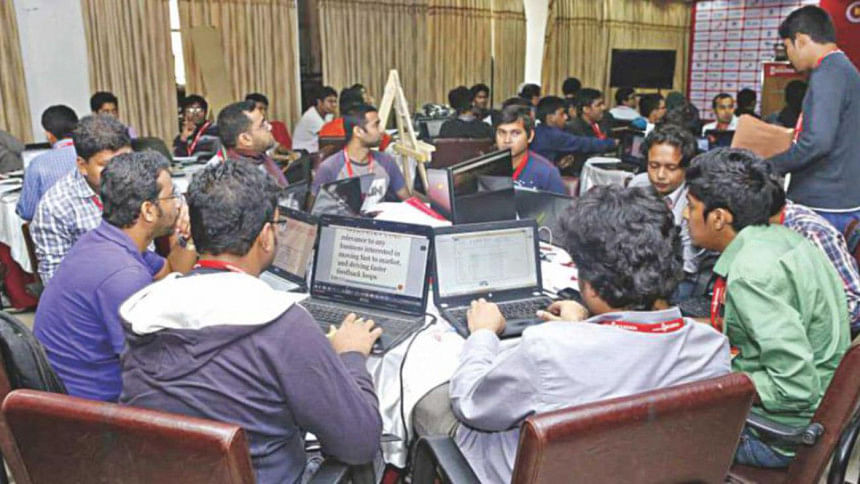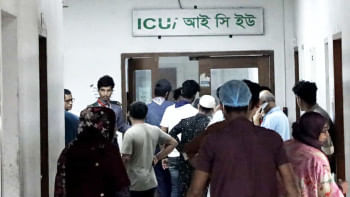A new Asian tiger?

Jonathan Garber, the markets editor at Business Insider, wrote an article addressing Bangladesh as a "New Asian Tiger" which attracted significant attention from researchers, policy-level practitioners, and many more relevant personnel. The article highlighted the strength of Bangladesh in maintaining a high GDP growth rate, over 6 percentage point, for more than a decade. In addition, political stability, stable macroeconomic performance and geopolitical support were flagged among the positive confounding factors of the country. He also mentioned some limitations of the country as reflected in its non-diverse export market, weak infrastructure and unstable financial market. However, a "New Tiger" without jobs for the unemployed, with the youth struggling to get "decent" jobs, and including a large underemployed workforce is no different from a tiger without claws and sharp teeth.
It's important to assess Bangladesh's youth unemployment and jobless growth in light of international standards and findings. According to the United Nations (2003) and ILO (2006), the youth in general are highly vulnerable to marginalisation in the labour market as they lack skills, work experience, job search abilities and financial resources. It's common knowledge that even under normal economic circumstances, firms do not prefer hiring inexperienced young people and are less interested in investing in training for young employees. Hence, the youth may get demotivated, excluding them from the labour force, which will eventually result in lower wellbeing (Daly and Delany 2013), and higher chances for them to get involved in criminal activities (Bell et al. 2014).
Eighty-five percent of the people in Bangladesh's labour market work in the informal sector. Between 2013 and 17, the Labour Force Survey shows, jobs in manufacturing declined by 0.77 million for both male and female. Female manufacturing jobs saw a big drop by 0.92 million. The share of youth Not in Education, Employment, or Training (NEET) has increased from 26 percent to 30 percent. Finally, youth unemployment shot up from 8.1 percent in 2013 to 10.6 percent in 2016-17. An addition of 2.8 million jobs over five years to the existing jobs indicates a growth rate of jobs below 1 percent point per year which is a poor number if compared with the over 6.5 percent GDP growth rate on an average during the same period of time. This is highly alarming and may have unlikely consequences, as evidenced by the recent students' protests against the quota system in public service recruitment. Lack of job opportunities in general has increased expectations of the youth from the government to provide them with more public jobs and make the entry process "more even" by reforming the quota system. The protest, in a way, reflects more on their frustration with the overall employment situation than on the manner of public sector recruitment.
It is high time to focus on creating jobs and encouraging the youth by involving them in skill-enhancing programmes. Labour Market Institutions (LMIs) can play a pivotal role here by improving the labour market conditions. Betcherman (2012) defined LMIs as a combination of law, practices, policies and conventions that determine the employment contracts, wage settings, unemployment benefits, social protections, collective bargaining, etc. I strongly believe that formulating Active Labour Market Policies (ALMPs) can be the first step for Bangladesh to get rid of its "jobless growth" stigma. Training programmes, Technical and Vocational Education and Training (TVET) reform project, and other skills enhancement schemes in Bangladesh are only dealing with the supply side problems (providing training without understanding what kinds of trainings are demanded by the recruitment sector). So, to reduce the skill mismatch, it's important to focus on the demand side also.
ALMPs should offer a package helping with the job search, negotiating with employers, subsidising the training courses, etc. We have job portals and job advertisements but how many of us get jobs by applying through these portals? Can't job portals and/or training centres provide job search assistance too by, for example, providing counselling and tagging job seekers with the prospective employers? Empirical evidence demonstrates the impacts of ALMPs on youth in Europe by major components. In terms of employment outcome, most positive effects are found for job search assistance (JSA). Even stronger positive effects are found for JSA with counselling irrespective of the involvement of monitoring.
However, apart from labour market instruments, the macroeconomic confounding factors are crucial to creating more jobs. A sluggish private sector investment that is hovering around 22-23 percent of the GDP since 2008, vulnerable financial market and weak institutions are bigger constraints in promoting business and creating new jobs.
Bangladesh, having already attained eligibility for graduation from the Least Developed Country (LDC) group, now requires comprehensive and continuous policy efforts to achieve its next target. Without addressing the labour market problems, without jobs for the youth, their "intrinsic values" and idealistic morals will only deteriorate. The extreme outcomes are observed when they resort to violence or crime out of frustration and become inactive in the labour market (i.e. they stop searching for jobs).
Mohammad Nazmul Avi Hossain is Senior Research Associate, SANEM, and presently studying applied labour economics at ITC-ILO, University of Turin, Italy.





Comments